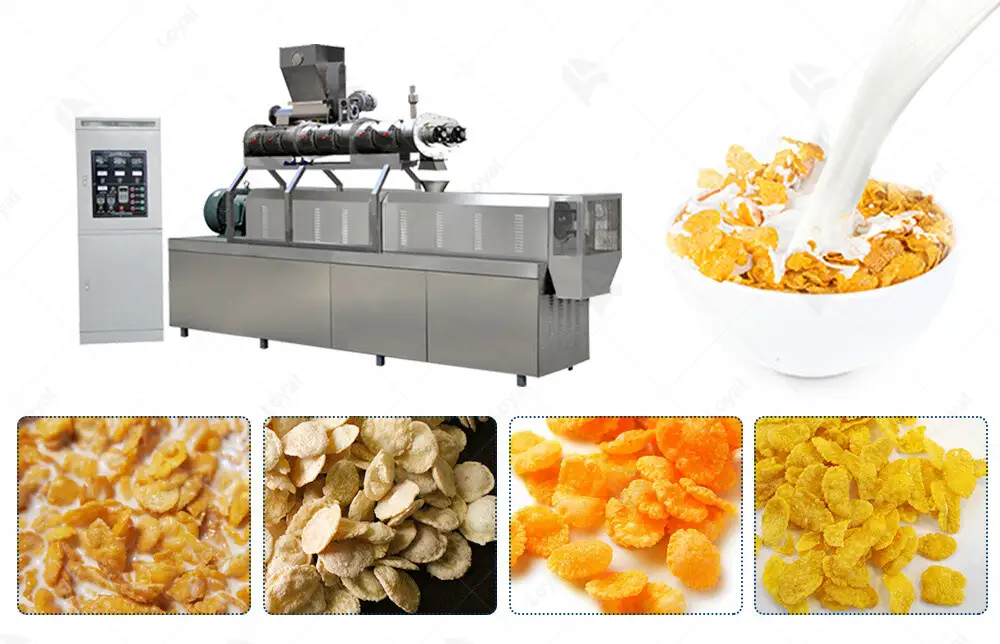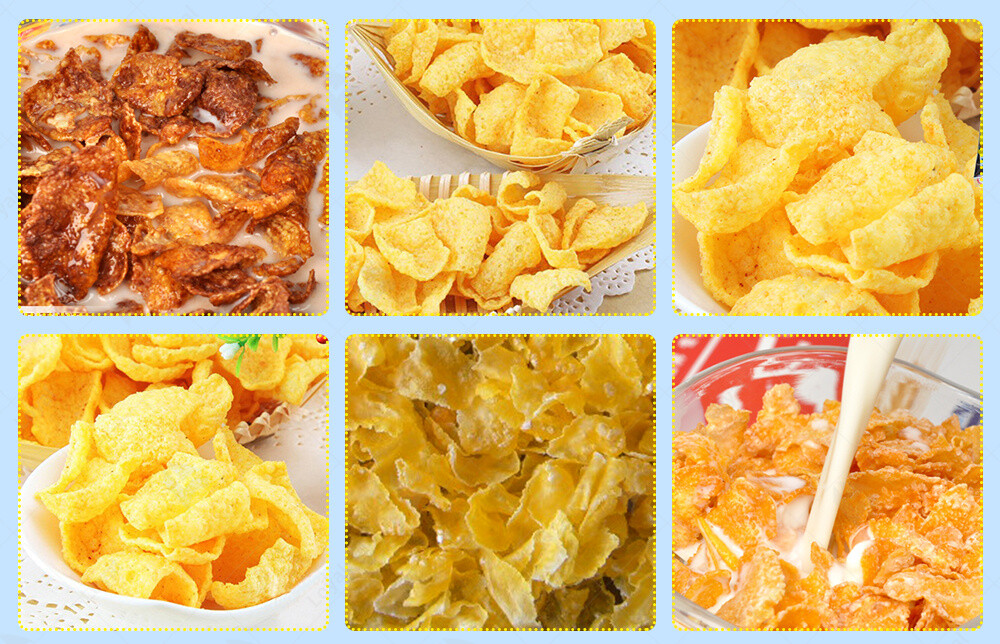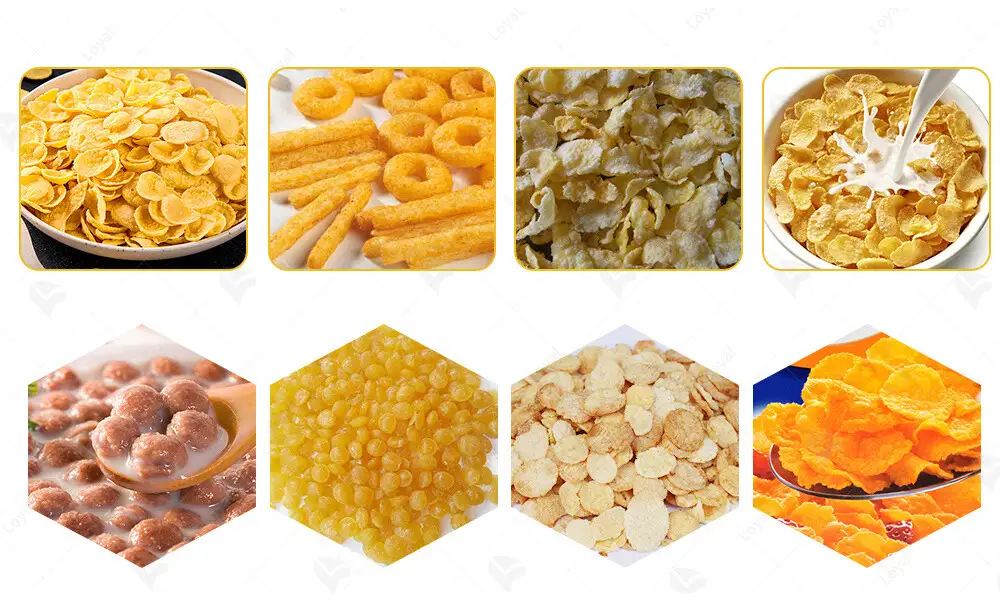Everything you need to know about snack food extruder In 2024
Introduction
In the realm of food processing machinery, the snack food extruder stands as a cornerstone of innovation and efficiency. As we delve into 2024, it becomes increasingly vital to grasp the intricacies and advancements surrounding this pivotal piece of equipment. From transforming raw ingredients into delectable snack products to driving forward technological progress in the industry, the snack food extruder holds a significant role in shaping the landscape of food production.
In this comprehensive guide, we will explore the inner workings, technological advancements, market trends, and future prospects of the snack food extruder. By understanding its functionality and impact, we can gain valuable insights into the dynamic world of industrial food machinery. So, let us embark on a journey to uncover everything you need to know about the snack food extruder in the year 2024.

Working Principle and Composition
A snack food extruder is a sophisticated piece of machinery designed to produce a wide variety of snack foods through the extrusion process. Understanding its working principle and composition is essential to grasp its significance in the food processing industry.
Working Principle:
At the core of a snack food extruder lies the principle of extrusion, a process that involves the transformation of raw ingredients into finished products through the application of heat, pressure, and mechanical force. The extrusion process begins with the feeding of raw materials, typically a blend of grains, into the extruder's hopper. These raw materials are then conveyed through a series of rotating screws within the extruder barrel.
As the raw materials move along the barrel, they are subjected to increasing temperature and pressure generated by the friction and compression exerted by the screws. This combination of heat, pressure, and mechanical shear causes the raw materials to undergo physical and chemical changes, resulting in their transformation into a viscous dough-like mass.
Upon reaching the die assembly at the end of the barrel, the viscous mass is forced through small openings in the die, known as the die orifice. The sudden release of pressure as the material exits the die causes it to expand and take on the desired shape. The extruded product is then cut to the desired length by a rotating knife or wire cutter before being conveyed to the drying or frying stage.
Composition:
A snack food extruder consists of several key components that work in tandem to facilitate the extrusion process:
1. Hopper: The hopper is the entry point for raw materials into the extruder and provides a controlled feed rate to ensure uniform processing.
2. Barrel: The barrel houses the screws and provides the primary processing chamber where the raw materials undergo heating, mixing, and compression.
3. Screws: The screws are responsible for conveying, mixing, and compressing the raw materials as they move along the barrel. They come in various designs to accommodate different processing requirements.
4. Die Assembly: At the end of the barrel, the die assembly features a die with specially designed orifices that determine the shape and size of the extruded product.
5. Drive System: The drive system consists of motors, gearboxes, and controls that power and regulate the rotation and speed of the screws, ensuring precise processing parameters.
6. Temperature Control System: Temperature sensors and heaters are integrated into the barrel to maintain optimal processing temperatures throughout the extrusion process.

Types of snack foods produced
Snack Food | Description |
Puffed Snacks | Light and crispy snacks made by extruding grains or starches, often flavored with various seasonings. |
Breakfast Cereals | Ready-to-eat cereals made from extruded grains or grain blends, often fortified with vitamins and minerals. |
Textured Vegetable Proteins (TVP) | Meat substitutes made from extruded soy or other plant proteins, used in vegetarian or vegan products. |
Extruded Snack Bars | Nutrient-dense bars made from extruded ingredients such as grains, nuts, seeds, and dried fruits. |
Extruded Pasta | Pasta shapes produced by extruding dough made from durum wheat semolina or other grains. |
Extruded Pet Treats | Snacks for pets made by extruding ingredients such as meat, grains, and vegetables. |
This table provides a brief overview of the main types of snack foods produced using snack food extruders, highlighting their diversity and versatility in meeting consumer preferences.

Technological Innovation in Snack Food Extruders
In the ever-evolving landscape of snack food production, technological innovation plays a pivotal role in driving efficiency, enhancing product quality, and meeting consumer demands. In 2024, the snack food industry is witnessing significant advancements in snack food extruders, revolutionizing the way snack foods are manufactured. Let's delve into the realm of technological innovation within this domain:
1. Advanced Control Systems:
Precision Control: Cutting-edge control systems integrated into snack food extruders enable precise regulation of parameters such as temperature, pressure, and moisture content. This level of control ensures consistent product quality and minimizes production variations.
Automated Process Monitoring: Real-time monitoring of extrusion parameters allows operators to detect and address deviations promptly, optimizing production efficiency and minimizing downtime.
2. Smart Manufacturing Technologies:
Artificial Intelligence (AI) and Machine Learning: AI-driven algorithms analyze data collected during the extrusion process to identify patterns, optimize settings, and predict potential issues before they occur. This proactive approach enhances operational efficiency and reduces the likelihood of product defects.
Predictive Maintenance: Utilizing sensor data and predictive analytics, snack food extruders can anticipate equipment failures and schedule maintenance activities proactively. This predictive maintenance approach minimizes unplanned downtime and prolongs equipment lifespan.
3. Material Handling Innovations:
Adaptive Feeding Systems: Advanced feeding mechanisms adjust the rate and consistency of ingredient delivery based on real-time process conditions, ensuring uniform product quality and minimizing waste.
Integrated Cleaning Systems: Automated cleaning systems streamline the cleaning and sanitation process, reducing downtime between product changeovers and ensuring compliance with strict food safety standards.
4. Enhanced Product Flexibility:
Multi-Functionality: Modern snack food extruders are designed to accommodate a wide range of ingredients and formulations, enabling manufacturers to produce an extensive variety of snack products with varying textures, shapes, and flavors.
Quick Changeover Capabilities: Modular design features facilitate rapid changeovers between product recipes, allowing manufacturers to respond swiftly to changing market demands and seasonal trends.
5. Environmental Sustainability:
Energy-Efficient Design: Energy-efficient components and optimized process parameters reduce energy consumption and minimize the environmental impact of snack food extrusion operations.
Recyclable Materials: Embracing eco-friendly materials and packaging solutions promotes sustainability throughout the supply chain, aligning with consumer preferences for environmentally responsible products.

Applications and Market Trends
1. Versatility in Snack Production
The snack food extruder is renowned for its versatility in producing an extensive range of snack products. From traditional favorites like cheese puffs and corn chips to healthier alternatives such as multigrain snacks and protein-rich bars, the extrusion process offers manufacturers the flexibility to cater to diverse consumer preferences.
2. Expansion into Health and Wellness Segment
One prominent trend driving the market for snack food extruders is the increasing demand for healthier snack options. Consumers are becoming more health-conscious, seeking snacks that are low in fat, sugar, and artificial additives while high in protein, fiber, and nutrients. As a result, manufacturers are leveraging extrusion technology to develop innovative snacks made from whole grains, legumes, and other wholesome ingredients.
3. Customization and Personalization
In today's hyper-connected world, consumers crave personalized experiences, even when it comes to their snacks. The snack food extruder allows manufacturers to customize snack formulations, textures, and flavors to cater to specific dietary preferences and taste profiles. From gluten-free and vegan options to exotic flavor combinations, the ability to tailor snacks to individual preferences is driving market growth and consumer loyalty.
4. Market Expansion and Global Reach
With advancements in technology and logistics, the market for snack food extruders is expanding beyond traditional boundaries. Emerging economies are experiencing rapid urbanization and rising disposable incomes, leading to increased demand for convenient and affordable snack options. Moreover, the globalization of food culture has created opportunities for snack manufacturers to introduce their products to new markets, further fueling the demand for extrusion technology.
5. Sustainable Practices and Eco-Friendly Packaging
In response to growing environmental concerns, the snack food industry is embracing sustainable practices throughout the production process. Manufacturers are investing in energy-efficient equipment, optimizing resource utilization, and adopting eco-friendly packaging solutions to minimize their environmental footprint. The incorporation of biodegradable materials and recyclable packaging is not only reducing waste but also enhancing brand reputation and consumer trust.
6. Technological Advancements and Innovation
As technology continues to evolve, so do snack food extruders. Manufacturers are investing in research and development to enhance equipment efficiency, productivity, and reliability. Advanced control systems, real-time monitoring capabilities, and predictive maintenance algorithms are empowering manufacturers to optimize production processes, reduce downtime, and ensure product consistency. Additionally, innovations in extrusion technology are enabling the creation of novel snack formats and textures, driving consumer excitement and market differentiation.

Importance of Quality Control in Snack Food Extruder Operations
1. Consistency in Product Quality
Quality control measures facilitate consistency in the quality attributes of snack food products manufactured through extrusion. By closely monitoring variables such as ingredient proportions, temperature, and pressure, manufacturers can uphold uniformity in taste, texture, and appearance.
2. Compliance with Regulatory Standards
Adhering to regulatory standards is imperative for snack food manufacturers to guarantee the safety and legality of their products. Quality control protocols ensure that production processes comply with food safety regulations, including sanitation practices, allergen management, and labeling requirements.
3. Prevention of Contamination and Hazards
Rigorous quality control protocols mitigate the risk of contamination and hazards in snack food extruder operations. Through routine equipment inspections, sanitation procedures, and hazard analysis, manufacturers can identify and address potential sources of contamination, ensuring the integrity of the final products.
4. Customer Satisfaction and Brand Reputation
Maintaining high-quality standards through effective quality control fosters customer satisfaction and strengthens brand reputation. Consistently delivering safe, flavorful, and visually appealing snack foods enhances consumer trust and loyalty, positioning brands for long-term success in the competitive market landscape.
5. Cost Optimization and Waste Reduction
Quality control initiatives contribute to cost optimization and waste reduction by minimizing production errors and product defects. By identifying and rectifying issues promptly, manufacturers can reduce waste, improve production efficiency, and enhance overall operational performance.
6. Continuous Improvement and Innovation
Quality control serves as a catalyst for continuous improvement and innovation in snack food extruder technology. By analyzing quality data, identifying areas for enhancement, and implementing process improvements, manufacturers can drive innovation, optimize production processes, and stay ahead of evolving consumer preferences.

Post-Maintenance Guide for Snack Food Extruders
After operating your snack food extruder, proper maintenance is crucial to ensure its optimal performance and longevity. Here’s a concise guide to post-maintenance procedures:
1. Cleaning and Sanitization
Cleaning Schedule: Develop a regular cleaning schedule to remove food residues, oils, and debris from the extruder components.
Sanitization Protocol: Implement a thorough sanitization process using approved cleaning agents to prevent bacterial growth and cross-contamination.
2. Inspection of Components
Screw and Barrel: Inspect the screw and barrel for wear, damage, or signs of corrosion. Replace worn-out components to maintain extrusion efficiency.
Die and Cutter Assembly: Check the die and cutter assembly for any buildup or blockages. Clean and clear any obstructions to ensure uniform product formation.
3. Lubrication and Calibration
Lubrication Points: Apply lubricants to the moving parts of the extruder, such as bearings and gears, to reduce friction and prevent premature wear.
Calibration Check: Verify the calibration of temperature, pressure, and speed settings to ensure accurate processing parameters for consistent product quality.
4. Electrical and Safety Checks
Electrical Connections: Inspect electrical connections and wiring for signs of damage or wear. Tighten loose connections and replace damaged components as needed.
Safety Features: Test safety features such as emergency stop buttons and interlocks to ensure they are functioning correctly and compliant with safety regulations.
5. Performance Testing
Trial Runs: Conduct trial runs after maintenance to verify the extruder's performance and product quality. Make any necessary Product Sampling: Collect samples of the extruded products for quality assessment. Evaluate parameters such as texture, color, and flavor to ensure consistency.
6. Documentation and Record-Keeping
Maintenance Logs: Maintain detailed records of maintenance activities, including dates, tasks performed, and any issues encountered.
Spare Parts Inventory: Keep an inventory of spare parts and consumables to facilitate timely replacements and minimize downtime.

Conclusion
In conclusion, the snack food extruder plays a pivotal role in the food processing industry, enabling the efficient production of a wide variety of snack products. With its advanced technology and versatile capabilities, the snack food extruder continues to drive innovation and meet the evolving demands of consumers for tasty, convenient, and nutritious snacks. As we look towards the future, further advancements in snack food extrusion technology are expected to enhance efficiency, quality, and sustainability, shaping the landscape of snack food production in the years to come.
Reference
1. Food Processing:
Website: [Food Processing](https://www.foodprocessing.com/)
2. Food Engineering:
Website: [Food Engineering](https://www.foodengineeringmag.com/)
3. Process Industry Forum:
Website: [Process Industry Forum](https://www.processindustryforum.com/)
4. Food Manufacture:
Website: [Food Manufacture](https://www.foodmanufacture.co.uk/)












